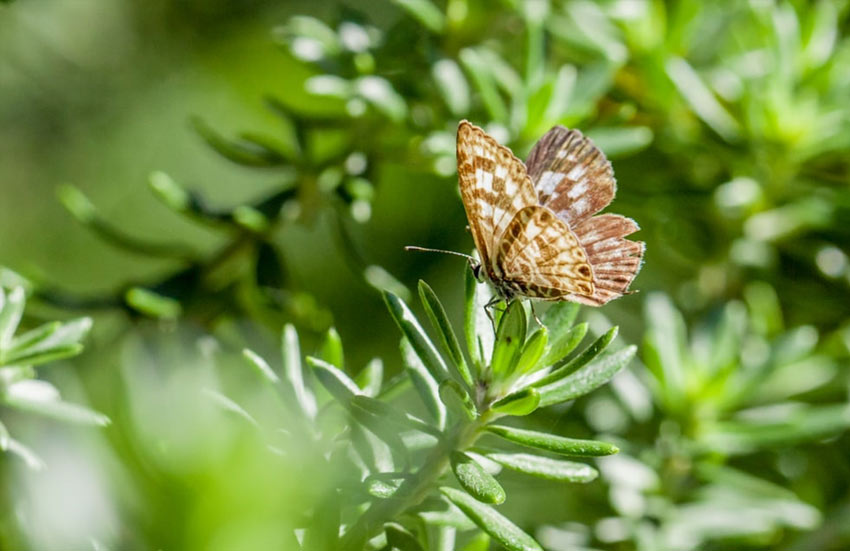Hedges are more important for Britain’s wildlife than you may think, and more than half of the UK’s hedgerows have been destroyed over the last 50 years. This is bad news for our wildlife, who use hedges as areas of shelter, feeding, nesting, and so much more.
In the summer, hedges can create areas of shade for tired animals and insects, while in the winter, they can protect wildlife from the chill and produce hard-to-find fruits, berries, seeds, nuts, and flowers that give them the energy they need to keep going until spring.
That’s why it’s up to people like you—the humble gardener—to create wildlife-friendly hedges in your garden, not only making your green space look great and give you privacy, but also protecting the beauty of British garden wildlife.
What wildlife live in hedges?
A variety of British wildlife may live in your hedges, including:
- Amphibians
- Common frog
- Common toad.
- Grey squirrels.
- Hedgehogs
- House mice.
- Pipistrelle bats.
- Rabbits
Birds may also build their nests in hedges during the breeding season, between March and August each year, or simply appreciate the cover that a hedge can provide while feeding.
To truly understand all the diversity the wildlife of the UK has to offer, simply take a browse through our dedicated British garden wildlife guides:
- Beginner’s Guide to Garden Wildlife
- Beginner’s Guide to Hedgehogs
- Beginner’s Guide to Foxes
- Beginner’s Guide to Birds
- Beginner’s Guide to Voles
- Beginner’s Guide to Toads & Newts
- Beginner’s Guide to Insects
Which are the best hedges for wildlife?

Best evergreen hedging for wildlife:
Yew is an evergreen conifer hedge that’s relatively slow to grow, making it easy to maintain, and is also dense, meaning wildlife can find a good, private spot to eat or build their nests.
Best shrubs and trees for wildlife:
If you’re in the UK, the best options are those that are native to the country, such as:
- Blackthorn
- Beech and Hawthorn: Perfect for ultimate privacy, growing up to sizes of 3-10ft.
- Field maple
- Holly: This is also an evergreen option to attract wildlife all year long.
- Hornbeam
- Rosemary and Heather: Perfect for controlled hedges of up to 2ft.
- Small trees, such as rowan and crab apple, which provide fruit for wildlife.
Best plants for wildlife:
Even though we’re focusing on hedges, it can also be great for wildlife if you choose to plant some rambling plants within your hedge. This allows flowers and fruits to grow throughout the hedge, creating a safe space for wildlife to enjoy buds or fruits.
Good options include:
- Bramble
- Honeysuckle: Loved by several species of butterfly, bumblebees, and moths.
- Wild roses
- Ivy: A great inclusion for nesting birds, and it flowers in autumn when food sources are becoming harder to find, supporting approximately 50 different species.
How do you prune a wildlife hedge?

Ideally, you only want to trim your hedge once a year, just before the seasons change from winter to spring. This is so that any wildlife in your garden can make the most of the insects and fruits your hedge provides during the winter.
Even then, it’s best to trim different areas of your hedge at different times, allowing any wildlife hiding inside to always have a safe spot to return to between pruning sessions.
When pruning, try to maintain a broad base, which encourages bushy growth—creating more privacy for ground-feeders—and don’t worry too much about tidying up leaves or twigs underneath. These are perfect for attracting and protecting birds, hedgehogs, other small mammals, and insects.
When can you cut hedges to avoid nesting birds?
To avoid disturbing birds that have decided to build their nest in your hedges, you should avoid trimming your hedge during the nesting season, which is usually between March and August.
How to make an existing hedge more wildlife friendly:
 If you already have a bordering hedge and you’re wondering how you can make it more wildlife-friendly with a few touches, you can try:
If you already have a bordering hedge and you’re wondering how you can make it more wildlife-friendly with a few touches, you can try:
- Adding more types of plants to your hedges, such as ivy or wild honeysuckle.
- Plant new native trees or additional hedges, such as beech, buckthorn, field maple, hazel, holly, hawthorn, or spindle.
- Grow new plants along the bottom of your hedge, perfect for ground-feeders, such as dead nettles, dog’s violet, garlic mustard, and hedge woundwort.
- Choose new hedges that provide food for birds and wildlife during autumn and winter, such as hawthorns, which produce high-energy berries in the winter.
Tidy up for your new guests:
As you prepare your garden for all your new guests, remember we’re ready to give a helping hand with our range of eco-friendly cordless garden equipment, including the best battery-powered hedge trimmers, chainsaws, and leaf blowers in our hedge maintenance tools.
Happy Hedging!


